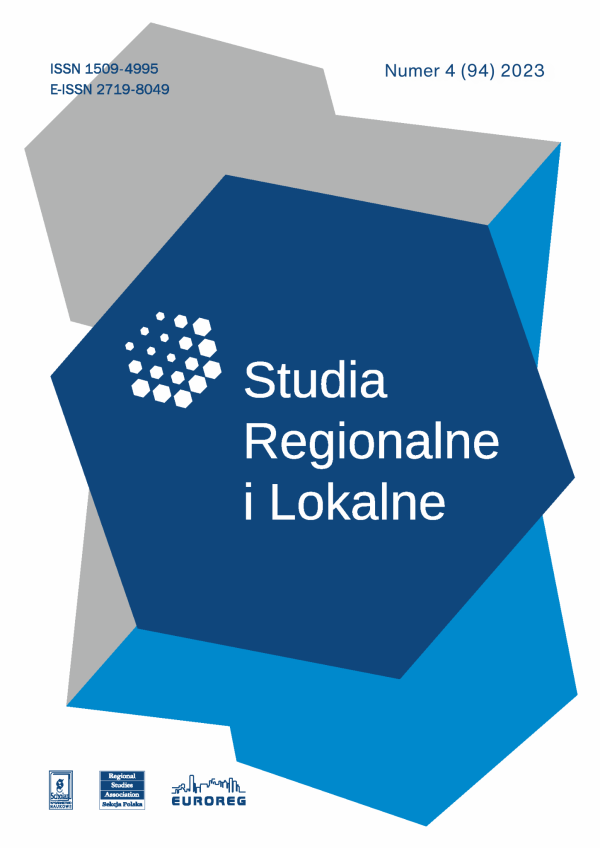Published in
4(94)/2023

- Christophe Chabrot, Robert PykaThe Metropolis of Lyon: An Example to Follow by the GZM Metropolis?[more]
- Dominika Wojtowicz, Anna BaczyńskaThe Spatial Patterns of Sustainable Development at the Local Level[more]
- Marta GötzTo Diversify or to Specialise? How to Strike a Balance in a Cluster Profile: A Case Study of the Hamburg Aviation Cluster (HAv), Drawing on Related Variety and Blending Processes[more]
- Janina Kotlińska, Anna Mizak, Anna Krawczyk-SawickaThe Impact of the Socioeconomic Potential of the Regions in Poland on Their Financial Condition as a Typology Criterion[more]
- Tomasz Kupiec, Dorota Celińska-JanowiczPublic Interventions Evaluation Practice in Cities with County Status[more]
- Kamil NowakThe Spatial Differentiation of the Housing Situation in the Process of Demographic Changes[more]
- Igor KseniczCommemorating Foreign Partnerships in the Landscape of Polish Municipalities: The Case of the Gniezno District[more]
- Roman SzulRichard Higgott, States, Civilisations and the Reset of World Order, Routledge, New York 2022, 165 s.[more]
- Andrzej MiszczukRoman Szul, Dynamika imperiów-cywilizacji a system światowy, Polskie Towarzystwo Geopolityczne, Kraków 2022, 271 s.[more]
- Maciej J. NowakJerzy Hausner, Michał Krzykawski (red.), Gospodarka i entropia. Jak wyjść z polikryzysu?, Wydawnictwo Naukowe Scholar, Warszawa 2023, 437 s.[more]


